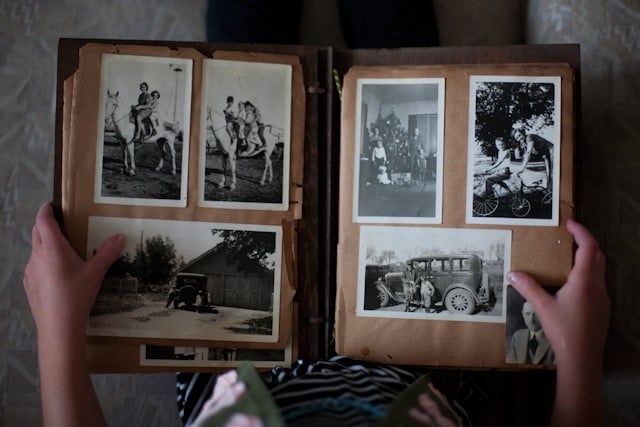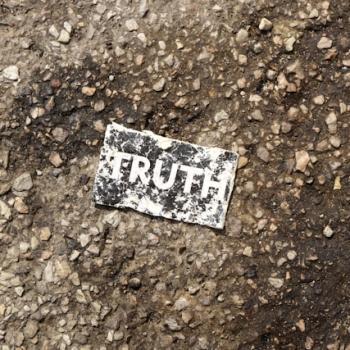
Up until now, we have spent most of our time alternating between looking at books and movies like in Song of the Sea or The Bird Box. More recently we’ve started discussing broader topics through the lens of fiction, such as with The Election Story or Is the Bible Fiction. We have not looked at many shows or other forms of media. However, I’ve found that one of the better forms of storytelling these days is in the world of video games. The game Stray got my attention last year for its beauty, its innovation, and its message of legacy.
It used to be that a video game translated into a movie was a near-instant failure. Does anyone remember that horrifying version of The Super Marios Brothers that came out in the 90s? But recently there has been a resurgence, with stories like The Last of Us, Fallout, and even a new Mario.
So yes, video games can contain some great fictional worlds. But do those fictional worlds hold the same potential for revealing God? I would argue, yes.
Into Darkness.
In the video game Stray you play as a feral orange cat in a post-apocalyptic landscape. After getting separated from your colony, you fall into what is later shown to be a buried city.
Keep in mind, that this cat does not speak and accomplishes tasks through very feline means. It is not a cartoon animal, but rather very closely based on a real cat. I think that is what makes this story all the more enjoyable. The restrictions are unique and force the story off the well-beaten path. In addition to the gorgeous art, it makes it a truly enjoyable experience.
The cat ends up in the lowest sector of a city overwhelmed by rat-like, sentient bacteria created by now-extinct human beings in an attempt to clean the garbage and radiation produced by their industry. After the initial escape, you are connected with a tiny robot who narrates the story by sharing its memories and thoughts.
This robot, you find, was formerly a scientist. He explains to the cat, and thus the audience, the dangers of the city and wonders at the things that have evolved since his human form died.
The new residents of the city are also robots, though of a different type. They scrounge what living they can off the world around them while struggling with the echoes of the humans before them. These robots suffer from classism, have religions, wear clothing, and experience familial relationships.
As the cat protagonist travels up the layers of the city and moves upward in the class system, we get to know these robots. They show other signs of their human predecessors. They create art. Painters, gardeners, and musicians are everywhere. They experience anger. We see one robot angrily shake its fist at others when the paint is spilled in front of their door. Another robot comments on loving the smell of paint, despite not having any form of olfactory organs. More importantly, they have a dream. These robots long to leave the closed-off city and see the sky.
What is Left Behind.
As the player works through the game Stray, they have an opportunity to explore many details of the world. Not only can you interact with various non-player characters you can take the time to hear their stories and see how they go about their lives. You can also find clues and breadcrumbs left behind by the human beings who created the buried city.
While there are still many questions in the end, it seems logical to understand that these robots were, like the tiny hovering robot that narrates the story, once human beings. The fact these robots have memories of the taste of food, the smell of paint, relationships and emotions, and of dreams, indicates that they are more than just parts.
This is especially true when you reach the final chapter of the game in the control room at the very height of the city. The player experiences soulless robots whose only purpose is to clean and maintain the locked room. While it could be that these robots just had no chance to advance, without the social structure of the robots below, it is also likely these robots just did not had any human consciousness uploaded to them.
In escaping from the room, the scientist robot is irreparably damaged and dies. However, the city is open to the sun. As a result, the threat of the sentient bacteria, which dies in ultraviolet light, is ended and the robots have, for the first time, access to the surface. The game ends with the cat lead enjoying the warmth of the sun.

When I Die.
As a young teen, I went through a long period of struggle against the existential dread of death. I would identify my core value as “purpose.” I can live a life without happiness, peace, love, or joy, but I cannot function without a foundation of purpose.
What terrified me about death was not the question of what lay on the other side. I wasn’t even necessarily afraid of the process of dying, though that intimidates me now. What caused me the most fear was the understanding that I would be forgotten.
While I knew that, at least for one or two generations, I may have people who knew me personally, eventually, they would die too. I couldn’t tell you my grandmother’s grandmother’s name. And while I know I’m here because of her, I couldn’t tell you anything about her.
This fear grew to an entirely new level when I was unable to have children in my adult life. While I hold out hope for adoption in the future, it seems clear to me that I might be forgotten before my life even ends. While I hope my books and art will create a small echo of me, I won’t have anyone to keep those in print or circulating.
In the United States, we don’t think often about death. When we do, it’s only an inspiration for art, music, and gothic decorations. Its a joke, or a morbid personality trait. We all have those friends who make Halloween into their entire personality.
My father used to point out that death is carefully tucked away in hospitals, funeral homes, and graveyards. This is not the typical experience of the rest of the world. Death is much more present in most non-western countries, and even in several western countries.
Legacy is not a concept that brings us much anxiety, then, until we are facing death directly.
In the article I posted about the movie Caddo Lake, I discussed the fact that, whether we like it or not, we leave an impact on future generations. However, for many in my generation, they will not have children and thus think much less about what they will leave behind. Their time on this Earth terminates with their retirement fund (though most can’t afford that).
But is life meant to be lived and enjoyed, or are we supposed to leave an impact behind when we go?
The Things Unseen.
In the hymn “Nearer my God to Thee” the first verse starts “Nearer my God to thee, nearer to thee. Though it may be a cross. That raiseth me.”
This hymn heavily convicts me. I think sometimes it’s accurate to say I’m “so heavenly-minded I’m of no Earthly good.” My desire is to “depart and be with the Lord” as Paul said in Philippians 1:23. Because of that I often get frustrated when I don’t see a purpose in my life apart from personal growth and nearness to the Lord.
So often my perspective is that I will be perfect, and near to the Lord in heaven. So if I can’t see a legacy left by my suffering, then I’d rather just leave. This is not God’s perspective.
God does desire for us to live good and happy lives. 1 Thessalonians 4:11-12 encourages us to “Live a quiet life”. Not all people are called by God to be martyrs and persecuted saints. God doesn’t call us to march and fight, and make battle and picket corruption and injustice. He encourages us, yes, to preach the gospel, and to sacrifice for those around us, but scripture doesn’t call us all to make it our goal to be missionaries, saints, and kingdom warriors. It calls us to live a simple, quiet life full of Godliness.
More so, Scripture shows us that God Himself sees it as a fair trade to suffer not just to further the kingdom, but also simply to draw closer to God. The final chapter of Habakkuk shows us how this prophet longs for God even when he does not see a harvest. Even when all his work comes down to nothing.
So we see that there is good in a quiet life, and in suffering simply for the sake of growing closer to God in this life. But what hope does that give us for when our lives are over?
In Stray, humans have long since been gone, at least in the physical sense. Yet the echoes of their society continue to inspire good and beautiful things. Art, family, justice, and dreams all continue to exist where there should have been nothing.
Our lives are not lived in isolation. In the art style known as pointillism, multiple small points of color join together to create gorgeous piece of art. The more dots, the more detail you can incorporate. You may not be able to see the importance of the one point of color that is your life. However, God stands in eternity and orchestrates the larger picture. I feel like one day we will stand in heaven and look down at the art God has created out of our lives, and we will be utterly astonished at what has become of our little dot. And we would be equally astonished at how necessary every life is.
Join us Monday Dec 16, 2024 for my recommended Winter Reading List.













